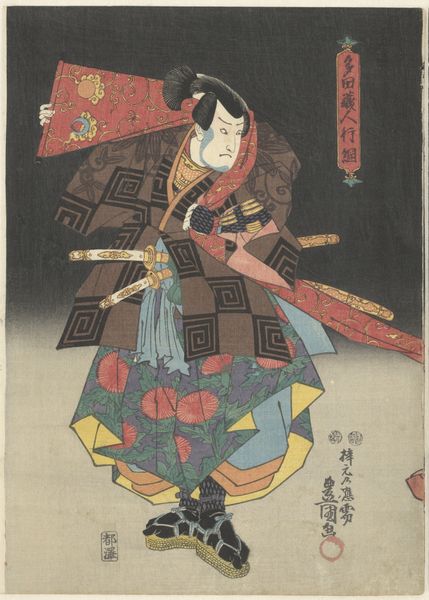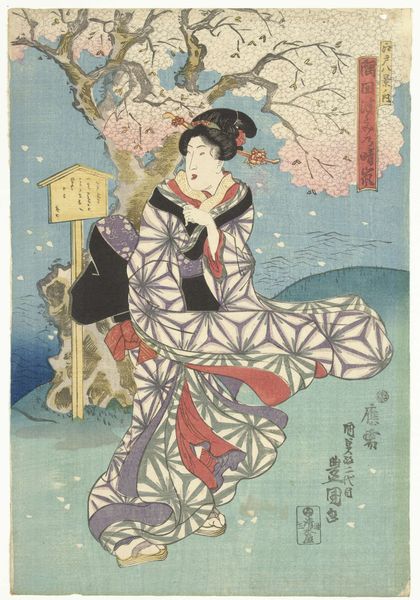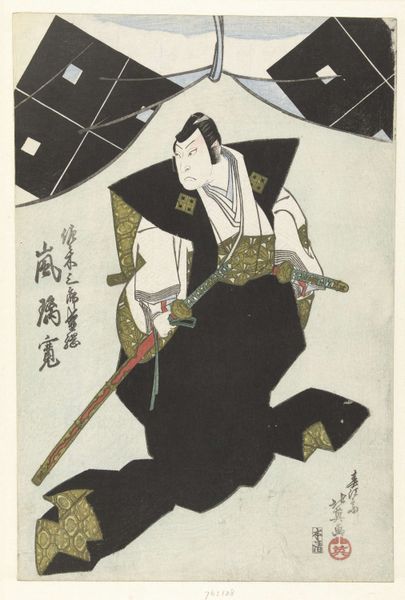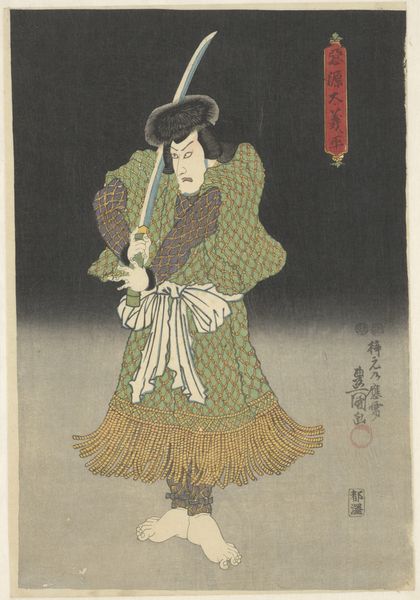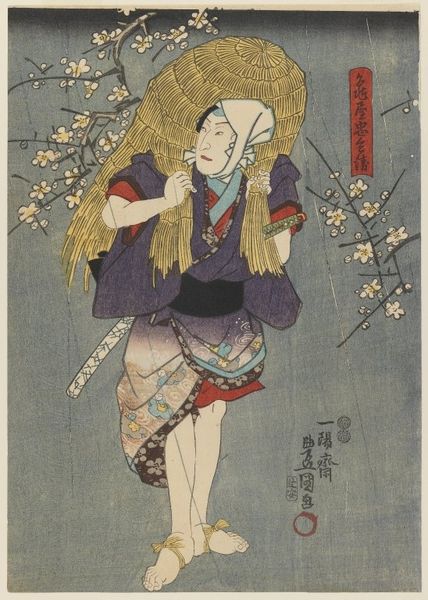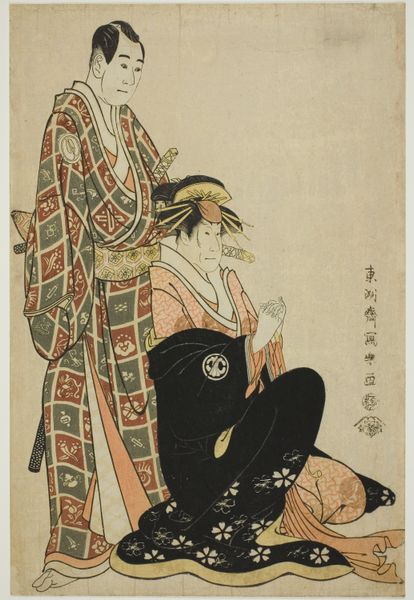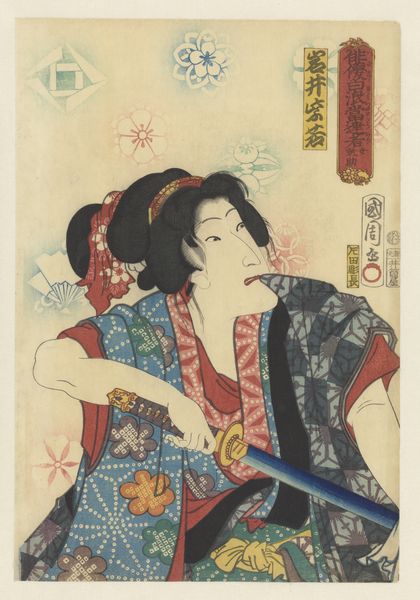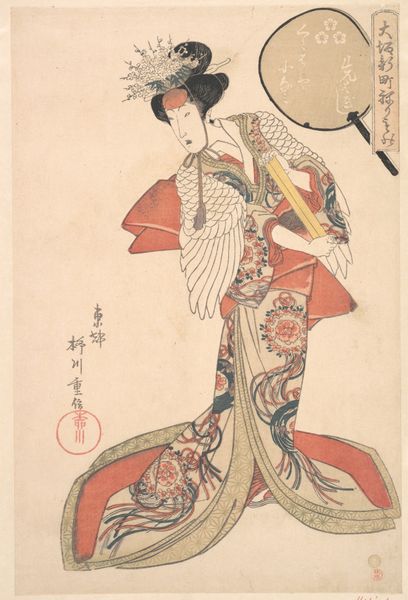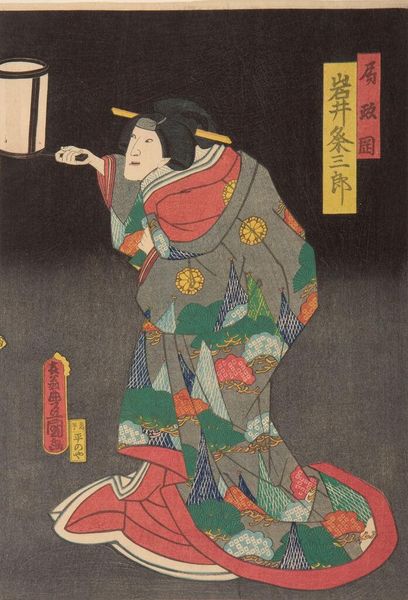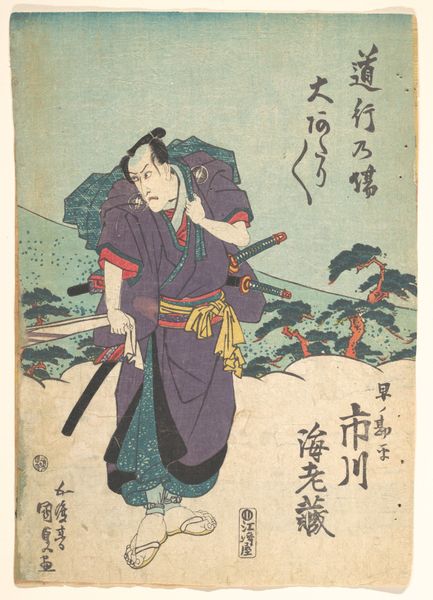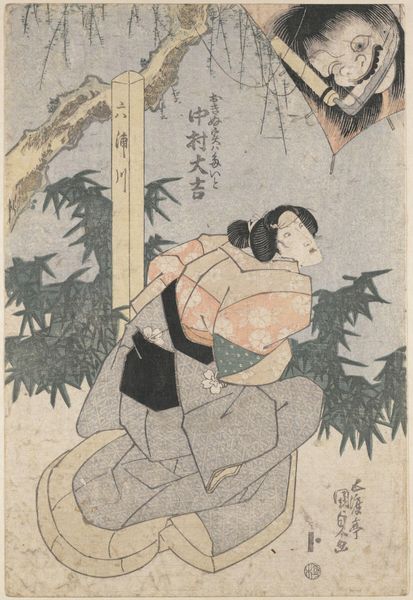
print, woodcut
#
portrait
# print
#
asian-art
#
ukiyo-e
#
figuration
#
historical fashion
#
woodcut
#
genre-painting
#
cartoon carciture
Dimensions: height 372 mm, width 255 mm
Copyright: Rijks Museum: Open Domain
Editor: Here we have "Ichikawa Morinosuke as Nagoya Sanza," a woodcut print by Shunbaisai Hokuei, created sometime between 1835 and 1845. The figure’s intense gaze and the stark contrast of colors create a dramatic mood. What's your interpretation of this work? Curator: This ukiyo-e print offers a fascinating glimpse into the intersection of performance, identity, and social status in 19th-century Japan. Consider the role of Kabuki theater at the time. It served as a crucial site for negotiating social norms, and often challenged rigid hierarchies. The portrayal of Ichikawa Morinosuke, a male actor, in the role of Nagoya Sanza, invites questions about gender performativity and its reception. How might the audience have responded to seeing a male actor embodying this particular role, and what social commentaries were being made through this representation? Editor: So the image isn't just about the actor, but about how his role reflects and maybe even challenges social expectations? Curator: Precisely! Ukiyo-e prints like this circulated widely, making these performances accessible beyond the theater itself. Think about how this image might have reinforced or subverted prevailing ideas about masculinity, power, and the roles individuals play within society. The sword he holds, his intense expression, and the theatrical costume—they all contribute to a complex visual narrative that deserves our careful attention. Also, notice the almost cartoonish facial features - might that play a role in social commentary? Editor: It’s interesting to think of a woodblock print as a form of social commentary! Curator: Indeed. The beauty of art lies in its capacity to be both a product and a critique of its time. This print pushes us to investigate the multilayered social dynamics embedded in art, gender, and performance during the Edo period. What I appreciate the most is thinking about art’s subversive qualities. Editor: I'm definitely going to look at Ukiyo-e prints differently now. Thanks for sharing your insight.
Comments
No comments
Be the first to comment and join the conversation on the ultimate creative platform.

